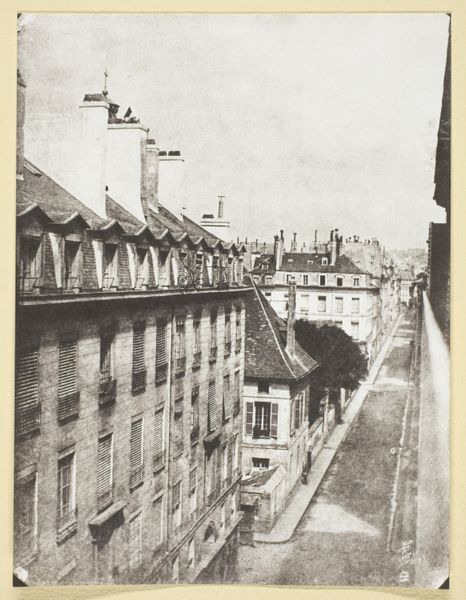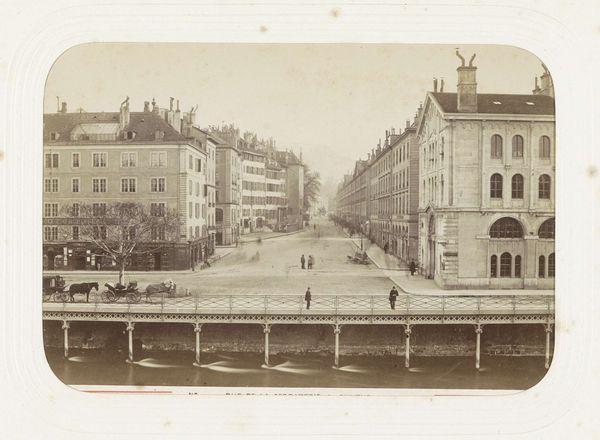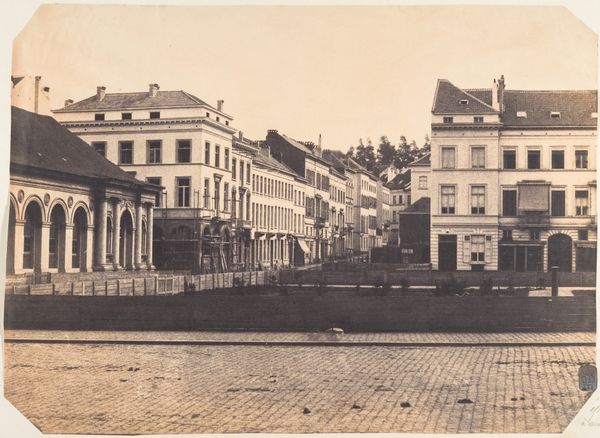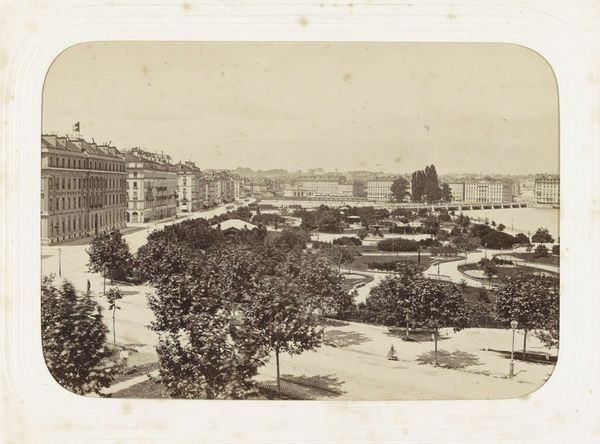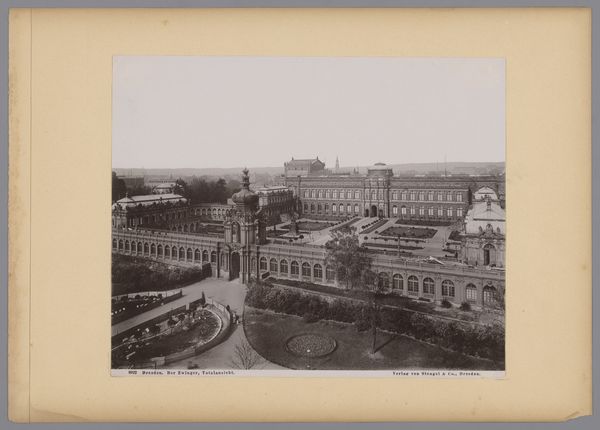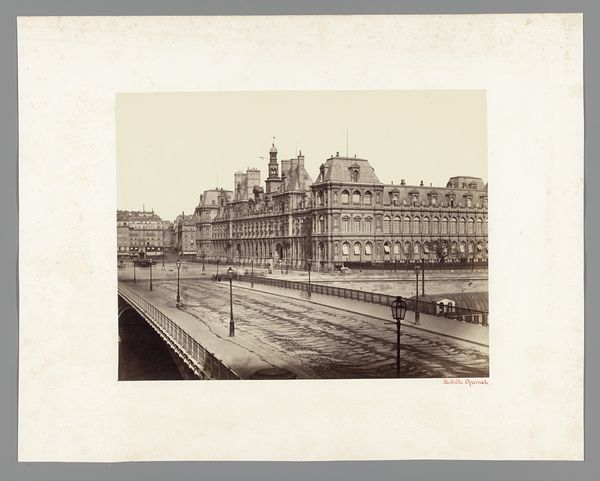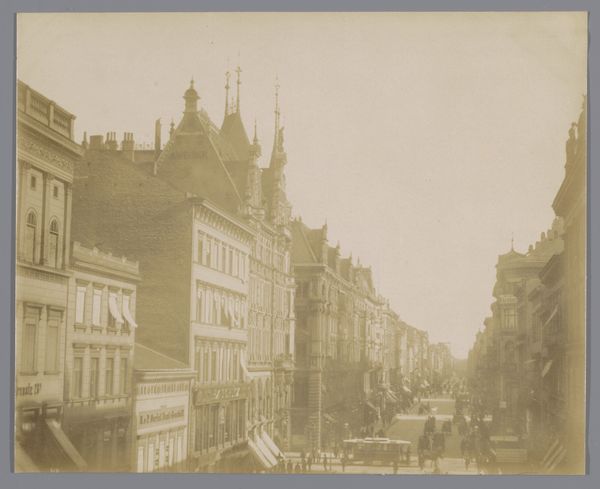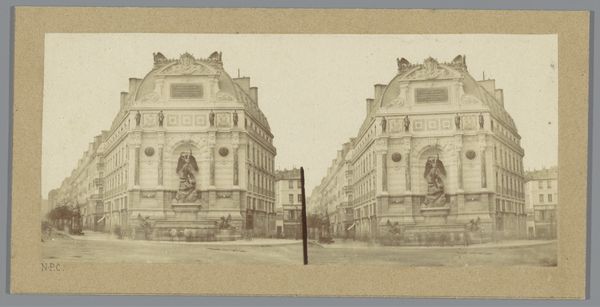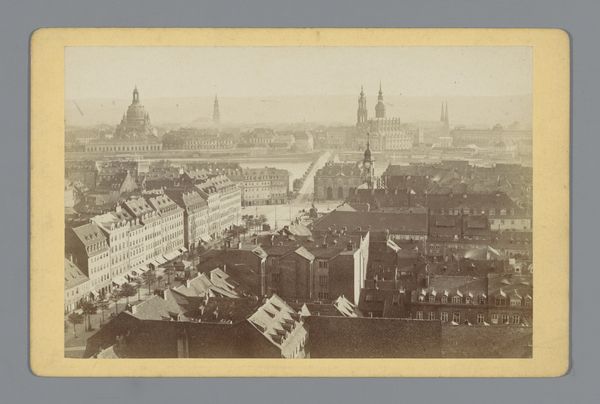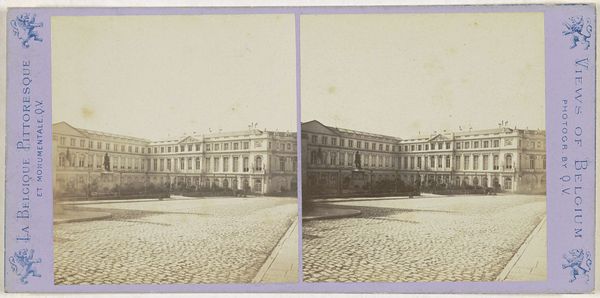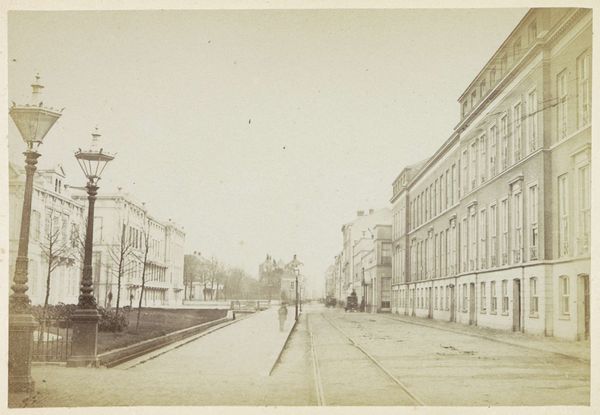
View of the Square in Melting Snow 1854 - 1856
0:00
0:00
print, plein-air, photography, gelatin-silver-print, architecture
#
snow
# print
#
plein-air
#
landscape
#
photography
#
gelatin-silver-print
#
cityscape
#
architecture
#
realism
#
building
Dimensions: Image: 18 x 22.2 cm (7 1/16 x 8 3/4 in. ) Sheet: 13 3/8 × 18 1/8 in. (34 × 46 cm)
Copyright: Public Domain
Editor: This is "View of the Square in Melting Snow" by Louis-Pierre-Théophile Dubois de Nehaut, dating from 1854 to 1856. It's a gelatin silver print that really captures the stillness of a winter's day. What draws your eye when you look at this image? Curator: I'm immediately struck by the process, how the gelatin-silver print, still relatively new, allows for such detail in capturing the fleeting effects of melting snow. It speaks to the democratization of art production, this move away from individualized painting to a process more dependent on chemistry and technology. Who has access to create these images? Who profits from their dissemination? Editor: That’s a really interesting point. I was focusing more on the aesthetic qualities, but you’re right, the *medium* itself is the message here. Curator: Precisely. Consider the labor involved – from the preparation of the photographic materials to the outdoor execution of the shot. Even the act of documenting "melting snow" can be seen as an effort to grapple with industrialization's impact on the natural world. Photography allows the possibility of multiple copies - it shifts from unique handcrafted work to the creation of products through mechanized reproduction. This radically transforms the traditional role of art and artist. Editor: I hadn't thought about the social implications like that, seeing it more as a straightforward depiction of a winter landscape. How does that change how we view these cityscapes today? Curator: Understanding the social and material context compels us to question assumptions. Is this realism, or a romanticized, perhaps even idealized version of urban life packaged for consumption? This seemingly objective ‘view’ is actually a constructed commodity reflecting the desires and values of the time. Editor: That's a powerful way to reframe it. I'm seeing so much more in this picture now. Thanks! Curator: And thank you! Examining the production of art transforms our experience with its perception, especially in images such as this one.
Comments
No comments
Be the first to comment and join the conversation on the ultimate creative platform.

